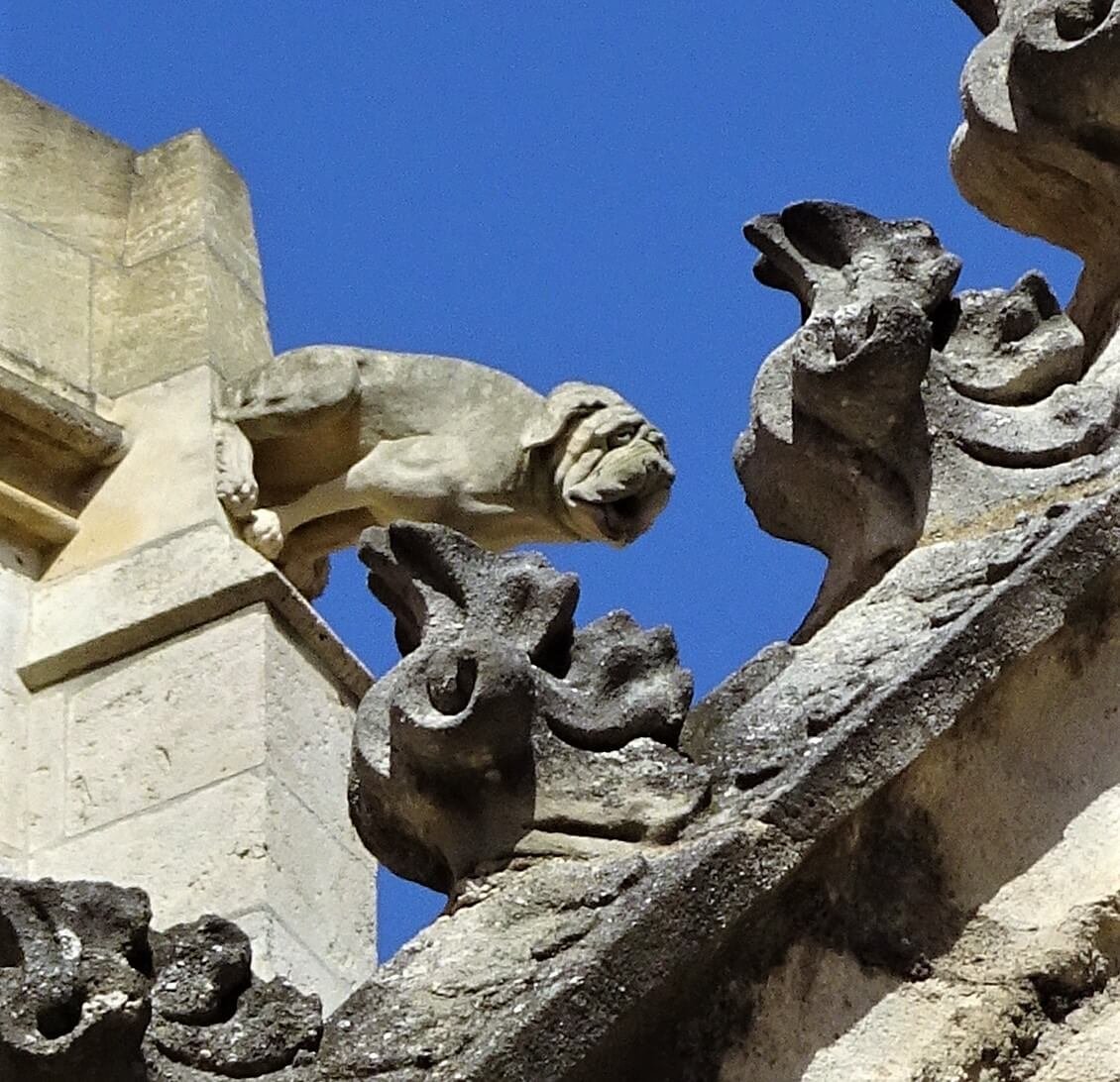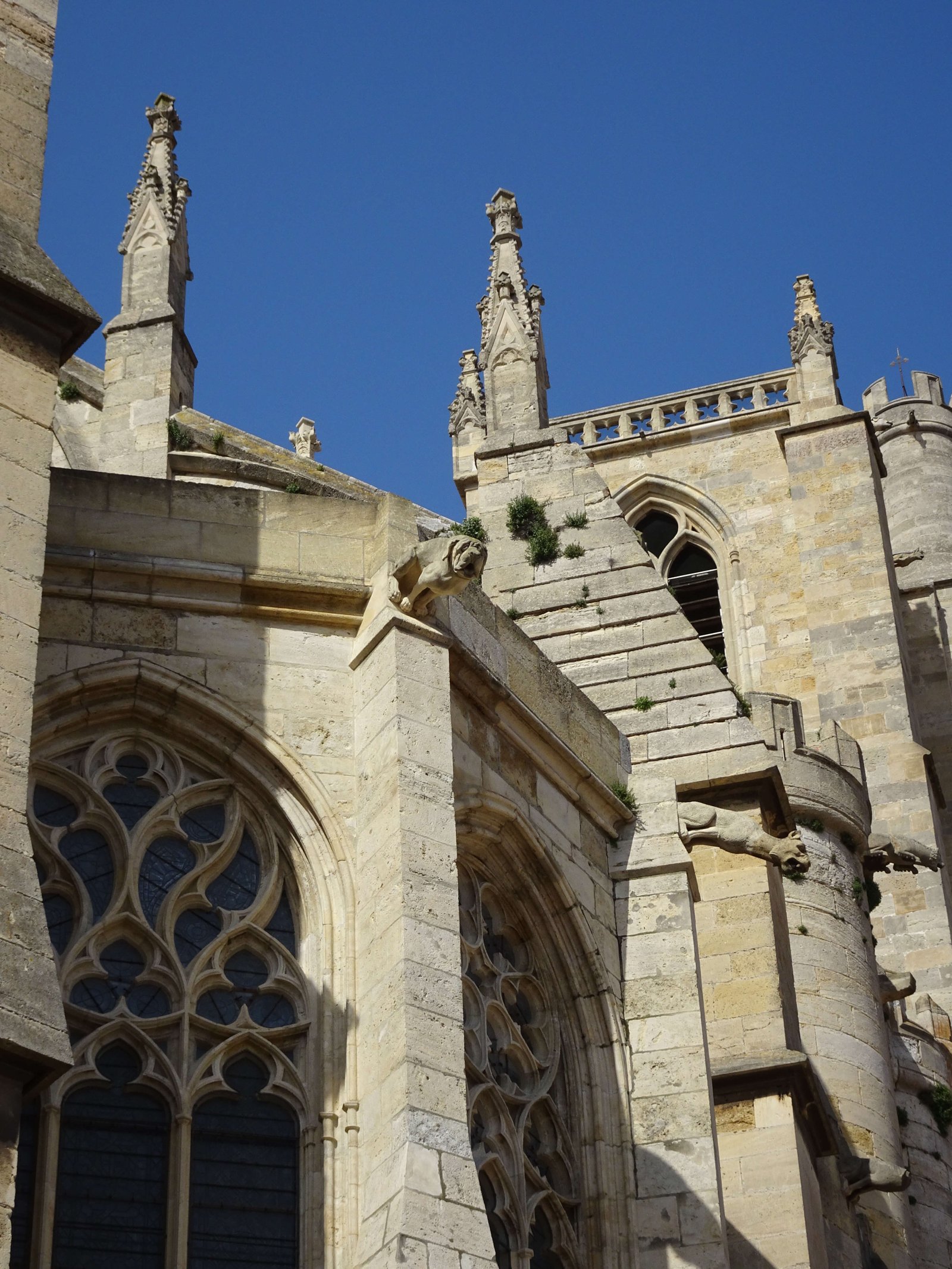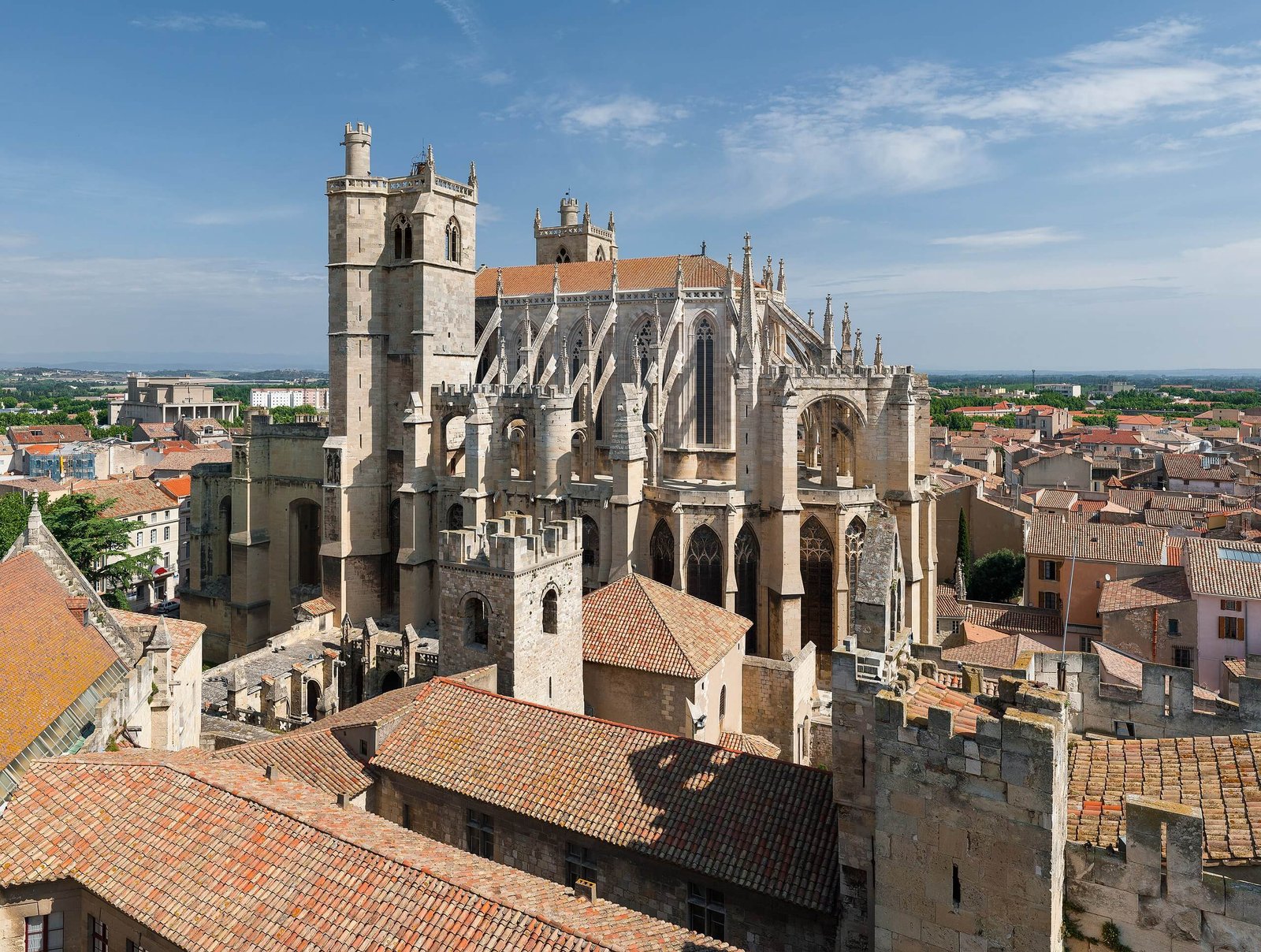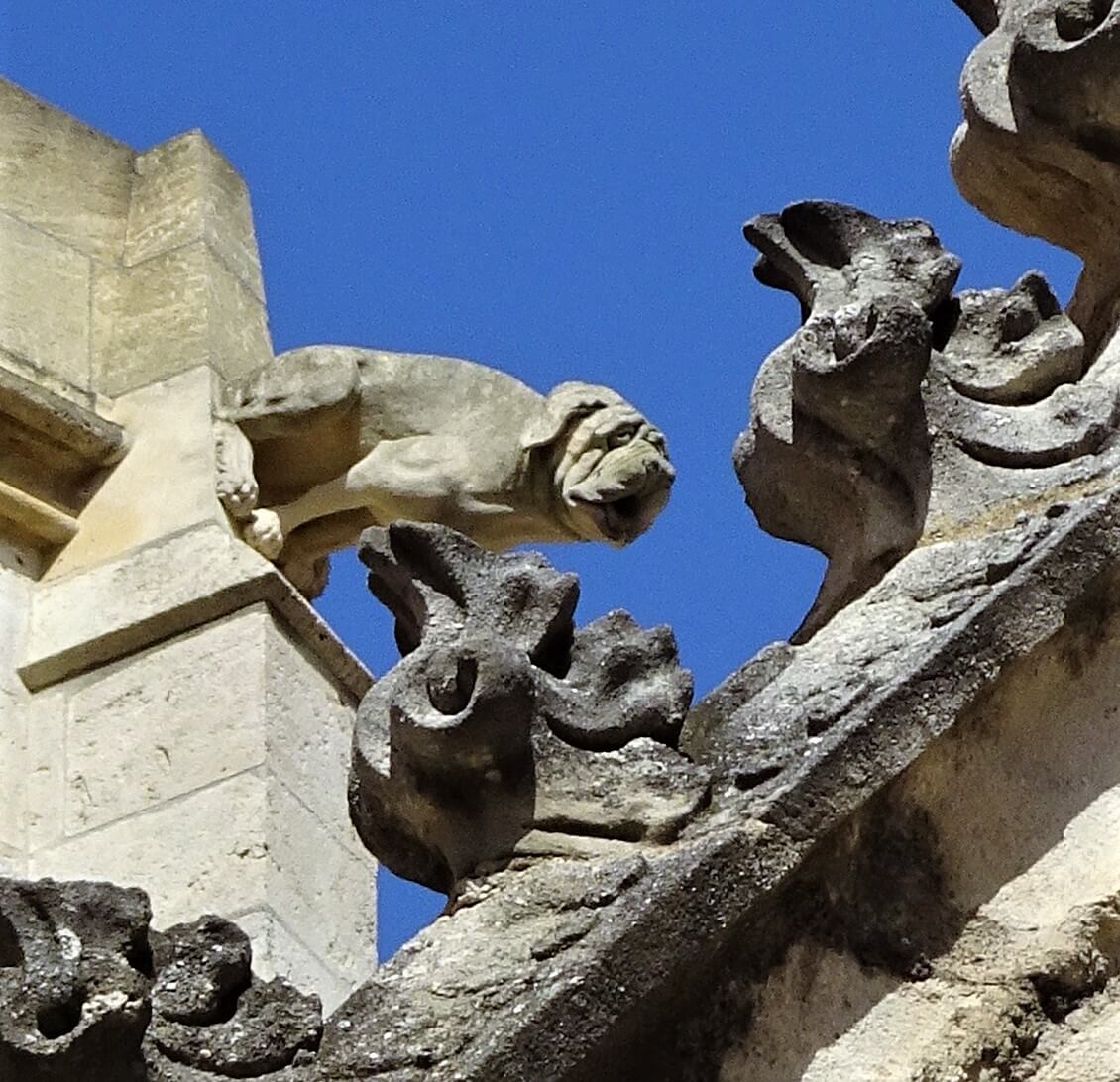A couple of years ago, I requested pictures of gargoyles that look like Saint Bernard dogs, and reader Anne Giovas was kind enough to send me one earlier this month. This charming little fellow lives on Narbonne Cathedral in the south of France. Isn’t it precious?

From the pictures, this creature looks like it could be a true gargoyle rather than a grotesque. Its open mouth, horizontal posture, and position on the building seem right for that function. Yet my instincts tell me it is modern, rather than medieval. For one thing, it is so lifelike that I can practically hear it panting and snuffling. In my experience, medieval gargoyles are rarely so naturalistic, and they also tend to be much more weathered in their appearances, like the crockets in the foreground of the photo above. I suspect that the dog may have been added during a restoration, probably in the 19th-century, though I cannot find any definitive evidence that such a restoration ever took place.

In fact, I was not able to find out much about the Rayonnant Gothic-style church (officially, the Cathedral of Saint-Just and Saint-Pasteur) in general. Narbonne is located in the Languedoc region of southern France, not far from the famous city of Carcassonne. Its cathedral is nowhere near as well documented as northern French Gothic churches like Chartres and Amiens. One of the few things I have learned is that the church is essentially just a choir – the liturgical end of the church, where the altar is, usually to the east of the transept – because the cathedral was never completed. The structure was began in 1272 and abandoned around 1340, seemingly because continuing would have required demolishing some of the city’s defensive walls. Preserving the walls was probably a smart move, since the Languedoc was a pretty embattled region during the Middle Ages. Nevertheless, Saint-Just Saint-Pasteur is still the tallest and largest church in southern France, as well as one of the tallest anywhere in the country.

The prolific Gothic architecture restorer Viollet-le-Duc visited Narbonne Cathedral in 1839, because the inhabitants of Narbonne hoped to hire him to complete their cathedral. (They would hardly have been the only Europeans to complete their Gothic church during the 19th century.) To that end, Viollet-le-Duc studied the building and drew several illustrations of it, including a hypothetical ground plan showing what it might look like when complete. Unfortunately for the Narbonnais, all interested parties were unable to come to the necessary agreements, and the project fell through. If carried out, it would have been Viollet-le-Duc’s first major reconstruction project. He later worked on Narbonne’s Archbishop’s Palace and nearly Carcassonne, but his work on Narbonne Cathedral seems to have been limited to sketches. So, the Saint Bernard gargoyle definitely wasn’t his creation, but perhaps some other modern restorer added it as a replacement later on.

Thank you for the photos, Anne!
Sources:
- “Things to See in the Languedoc: Historic Cities: Narbonne“. Midi-france.info.
- “La Cathédrale Saint-Just-Saint-Pasteur et Son Trésor“. Patrimonie & Musées Narbonne.
- “Cathédrale Saint-Just et Saint-Pasteur“. Aude Pays Cathar (Aude tourism website).
- “Narbonne Cathedral“. Wikipedia.
- “Viollet-le-Duc et Narbonne: un chantier fondateur“. Narbonne: Les Archives Municipale, 2014.


